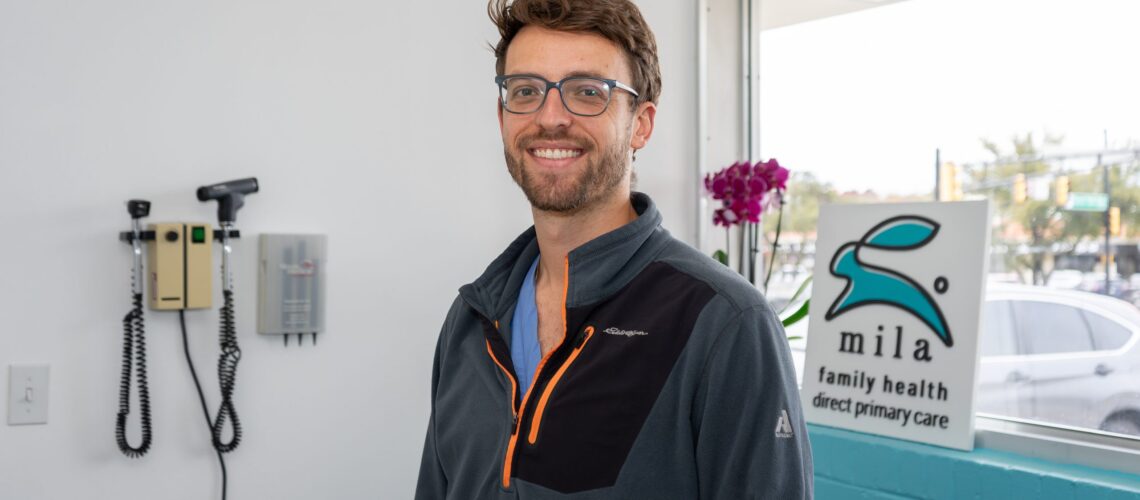Why some Tarrant physicians favor membership-based care over accepting insurance
December 25, 2024

- AI, ESG, and cyber will be the key insurance themes in 2025
- How do you get pre-approved for an emergency?
- Family raises funds for daughter’s prosthetic arm, another child after insurance denial
- Dogecoin Price Prediction: Could DOGE Reach $2 by 2025?
- See Where Home Insurance Policies Were Dropped in Your State
Editor’s note: During the holiday season, the Fort Worth Report is looking back at the stories you told us you appreciated the most in 2024.
Bạn đang xem: Why some Tarrant physicians favor membership-based care over accepting insurance
Tarrant County is seeing a growing number of physicians opt out of accepting insurance plans and instead turn to direct primary care — a model that requires patients to pay a monthly fee directly to the physician instead of insurance companies.
In February 2024, there were approximately 20 direct primary care practices in Tarrant County. As of Dec. 19, there are 24 in the area, according to DPC Frontier, an organization that tracks the number of membership-based care clinics across the country.
For some physicians straight out of medical school, direct primary care offers a new side of clinic ownership and flexibility they hadn’t seen before. But, the model still faces some criticism and concerns from health experts about how it could disrupt existing funding models.
Crafting ‘affordable primary care’
When Dr. Anatoli Berezovsky began his family medicine residency program at JPS Health Network in 2020, he grew frustrated at how insurance companies influenced the way physicians practice medicine.
He felt stuck in the “traditional” form of medicine that required seeing dozens of patients in a day, leading to a disconnect between patients and their doctors, Berezovsky said.
“There’s just so many misaligned incentives,” he said. “Patients wanted something. I wanted to be able to provide for them, but the (insurance) payer kind of dictated how we practiced and what we did.”
When Berezovsky decided it was time to launch his own practice, he gravitated toward direct primary care — a model he had heard about during his third year of medical school.
Berezovsky opened Mila Family Health in August 2023 as a home visit direct primary care practice. In November 2024, he opened a brick-and-mortar clinic on Forest Park Boulevard in Fort Worth. The practice’s monthly fees range from $25 to $100 per person, depending on age.
Members of Mila Family Health have unlimited access to Berezovsky through calls, texts, emails and video chats. Patients can receive same- or next-day visits as well as primary care services.
Xem thêm : Best Whole Life Insurance Companies for December 2024
Mila Family Health now serves more than 50 patients in North Texas. Other direct primary care practices say they are experiencing similar growth.
Mid Cities Direct Primary Care, launched by Dr. Kara Farley, opened its doors in Grapevine four years ago. In February 2024, the practice served more than 750 patients in Dallas-Fort Worth. Ten months later, Mid Cities said it served over 950 patients. The practice grew to a size that required an additional physician on staff, Farley told the Report.
Enlightened Health Direct in south Arlington opened its doors to patients in 2022. In February 2024, the clinic served over 130 patients and had grown to 300 across North Texas by December, Enlightened founder Dr. Alex Vilaythong told the Report.
The direct primary care model fills a gap for people who can’t afford to pay for insurance, but also don’t qualify for health assistance programs, he added.
“It’s a slow start, because it’s a very new concept for most patients and they’re hesitant,” Vilaythong said. “But, I’m seeing a lot of patients with health insurance make that switch.”
Direct primary care raises concerns
Despite the growing presence of direct primary care practices across the country, the model presents several challenges for the health care industry, Dr. Mark Fendrick, professor of health management and policy at the School of Public Health at the University of Michigan, told the Report.
A move to direct primary care might actually be creating disparities in the number of available primary care physicians in the traditional insurance-based model, Fendrick said.
Other health researchers have argued that direct primary care could be a contributing factor in the primary care shortage. Since the model often involves fewer patients for doctors, it could potentially mean fewer overall patients are seen by a single physician and lead to limited access in areas, according to a 2021 study in the National Library of Medicine.
“They may be taking away appointments or bandwidth of clinics who would see people across the income spectrum to now serve people with a higher net worth,” he said.
Supporters of direct primary care argue the model could alleviate the shortage by increasing job satisfaction, minimizing burnout and attracting more doctors to primary care.
Direct primary care practices are also distributed unevenly across the country with physicians tending to establish these clinics in upper-class communities, Fendrick said.
Xem thêm : Switch to GOP gives Hillary Cassel leadership position on insurance panel
The majority of the direct primary care clinics in Tarrant County are located in the northern region. The median income for Keller and North Richland Hills, both in northeast Tarrant County, households in 2022 was $110,963.
Communities in Tarrant County with high levels of poverty and health disparities — ZIP codes 76104, 76105 and 76119 — do not have a direct primary care practice within their boundaries.
Berezovsky recognizes the challenges and criticism surrounding direct primary care, but he believes that there’s some people that can’t afford “even the smallest amount” for health care through insurance. Direct primary care presents an opportunity to meet the needs for all people, he said.
“If you set the price low enough, or if you create the right incentives, then yeah, direct primary care can help alleviate the medical desert problem,” Berezovsky said. “I do think in direct primary care we take really good care of people.”
David Moreno is the health reporter for the Fort Worth Report. His position is supported by a grant from Texas Health Resources. Contact him at [email protected] or @davidmreports.
At the Fort Worth Report, news decisions are made independently of our board members and financial supporters. Read more about our editorial independence policy here.
Related
Nguồn: https://propertytax.pics
Danh mục: News
